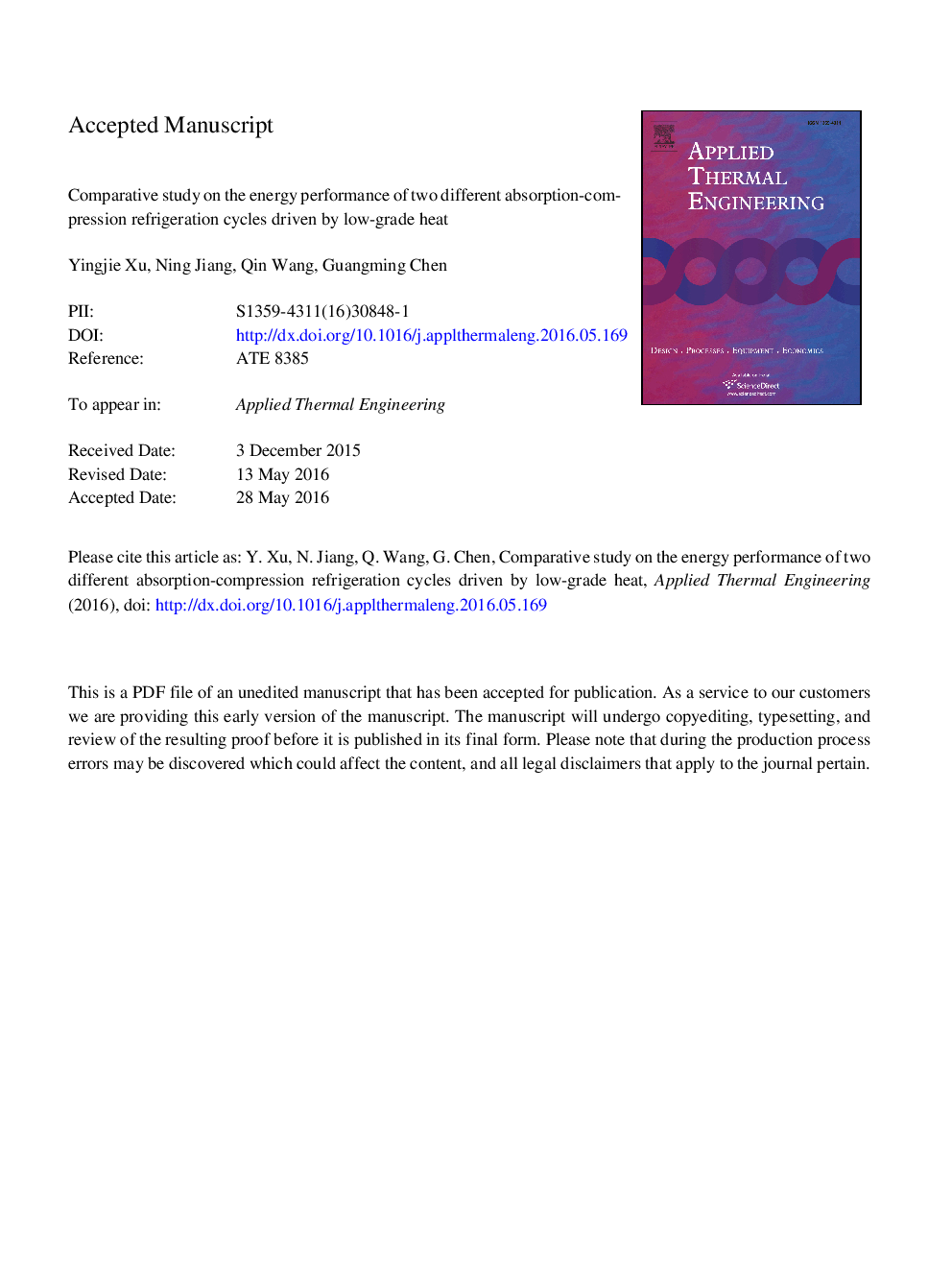| Article ID | Journal | Published Year | Pages | File Type |
|---|---|---|---|---|
| 7047330 | Applied Thermal Engineering | 2016 | 32 Pages |
Abstract
In this paper, performances of an absorption-compression refrigeration cycle with an evaporator-condenser (EC) and a novel absorption-compression cycle with an evaporator-subcooler (ES) are carefully compared and analyzed, which both have energy-saving potential. The comparison is based on three energy performance parameters-the COP of compression subsystem, low-grade heat transforming ratio, and global COP taking into account power cycle efficiency. Comparative investigation is carried out over evaporating temperature (Te) ranging from â20 to 10 °C, generating temperature (Tg) ranging from 90 to 120 °C, and condensing temperature (Tc) ranging from 35 to 45 °C. Based on the analysis of COP of compression subsystem, EC should be adopted when low-grade heat is free and absorption system cost is low. According to the analysis of low-grade heat transforming ratio, ES is recommended when low-grade heat cost much. Based on the analysis of global COP, EC saves more energy at low Te and high Tg, where the global COP of EC is 7.6% and 14.6% higher than that of ES, respectively. However, ES has a good performance at high Te and low Tg, where the global COP of EC is 18.6% and 8.8% higher, respectively. The better cycle is recommended for different working conditions.
Related Topics
Physical Sciences and Engineering
Chemical Engineering
Fluid Flow and Transfer Processes
Authors
Yingjie Xu, Ning Jiang, Qin Wang, Guangming Chen,
